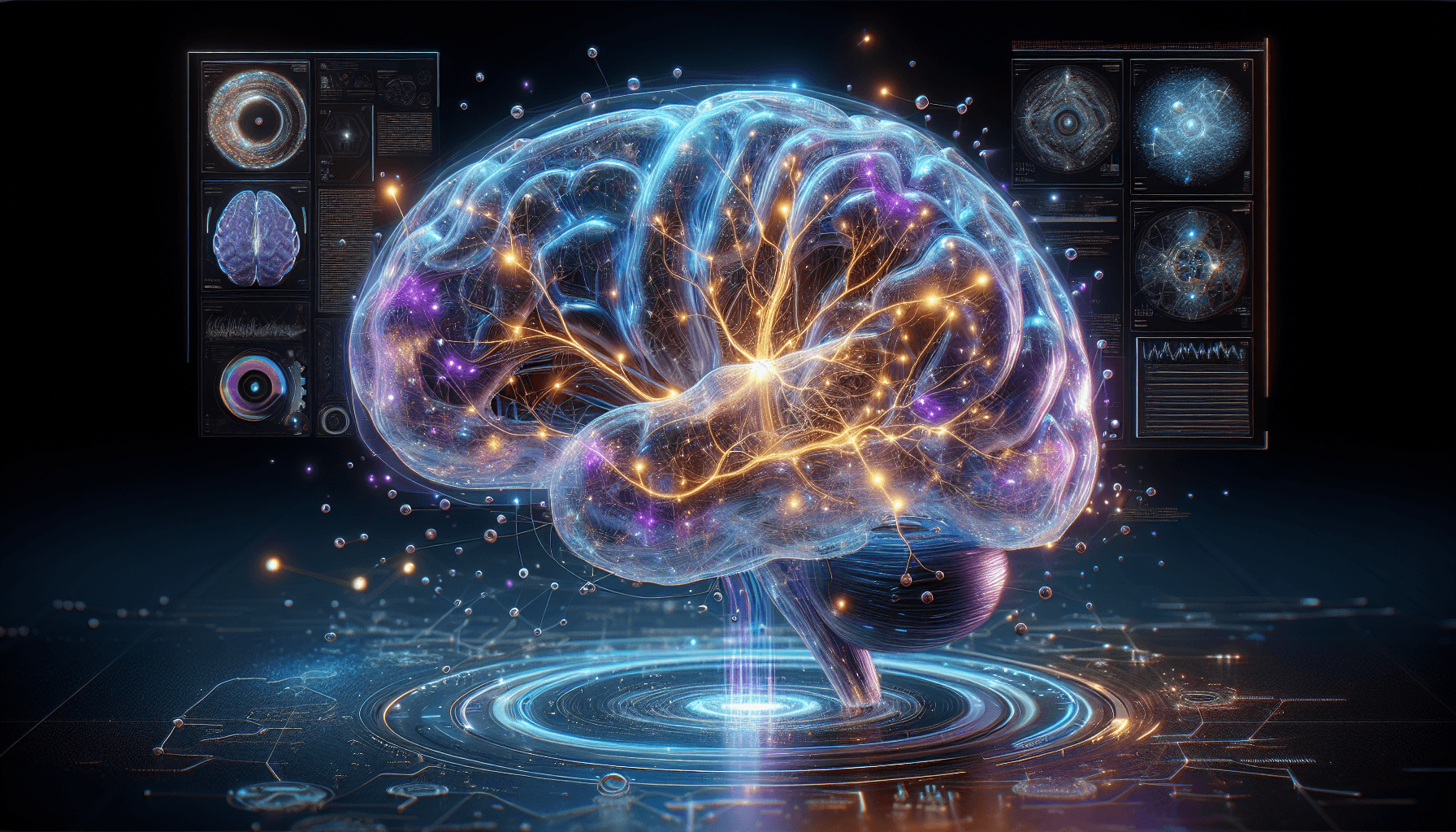Your brain rewires itself with every new experience you have. Neural reorganization happens naturally, but special techniques can speed up this process.
Scientists have found ways to boost brain plasticity that help you recover from injuries and think better.
These simple methods strengthen old brain pathways and build new connections between cells.
Research shows these protocols can make your memory, focus, and learning better – no matter how old you are.
Click here to learn more about: quick and effective relaxation techniques for busy individualsHow Your Brain Changes Itself
Brain plasticity allows your mind to physically change its structure when you learn new things. Neural networks reorganize themselves based on what you do every day.
Synaptic strengthening happens when you practice skills over and over again. High-intensity interval training boosts BDNF (a brain growth protein) by 30%, helping your brain form new connections faster.
Your brain is like clay – it can be molded and shaped through your daily activities and experiences.
The Forest Path Principle
Cognitive rehabilitation works like trails in a forest – the more you walk them, the clearer they become.
Dendrite growth occurs naturally when you use specific brain pathways repeatedly.
Think of your brain as a living map that updates itself based on what you do most often.
Brain changes happen in four main ways:
- Learning new skills creates brand-new neural circuits in your brain
- Axonal sprouting helps recover from injuries by building alternative pathways
- Forming new habits strengthens specific neural connections through repetition
- BDNF stimulation helps your brain adapt to new environments through cortical remapping
Lifelong Brain Flexibility
Memory consolidation continues throughout your entire life, not just during childhood as once believed. Cognitive flexibility allows your brain to keep changing and growing even in old age. A 2022 study found 70-year-olds who learned new skills showed neural circuit optimization similar to people decades younger.
Physical exercise supercharges brain change: Just 20 minutes of exercise increases brain plasticity for up to 2 hours afterward. Neuroprotection strategies like regular movement help your brain stay flexible and responsive.
Neuroplasticity Enhancement Methods and Their Effects
Key Takeaways
- HIIT workouts boost BDNF levels by up to 200-300% compared to rest, creating optimal conditions for brain plasticity
- Dance training increases hippocampal volume by 4% over six months, improving spatial memory by 13%
- The brain produces approximately 700 new neurons daily in the hippocampus, demonstrating lifelong neurogenesis
- Combining physical exercise with mental challenges provides greater neuroplasticity benefits than either activity alone
- Stroke patients can regain up to 70% of lost function through targeted neuroplasticity-based rehabilitation
Understanding Neuroplasticity Fundamentals
Neural reorganization makes your brain constantly change and adapt to new situations. Brain plasticity happens when neurons connect in new ways after you learn something. Your brain cells create new connections when you practice skills repeatedly. Cognitive rehabilitation studies show these changes happen within days of starting new activities.
Every thought you think and action you take physically rewires your brain's structure.
- Dr. Michael Merzenich, Neuroscientist
The Science Behind Brain Change
Synaptic strengthening occurs when connections between brain cells become stronger through repeated use. Neurogenesis promotion happens even in adult brains, with new neurons forming in the hippocampus daily. A 2021 study found that learning a new language created cortical remapping in adults within just 8 weeks.
Brain change happens at different levels:
- Dendrite growth extends neuron branches to connect with more cells
- Axonal sprouting helps damaged brain areas find new ways to communicate
- BDNF stimulation acts like fertilizer for growing new neural connections
- Memory consolidation strengthens important pathways while pruning unused ones
Practical Brain-Changing Activities
Cognitive flexibility training works best when you combine different types of mental challenges. Neural circuit optimization happens faster when you learn skills that use multiple brain areas together. A 2023 study showed people who combined music practice with physical exercise had 40% more neuronal connectivity growth than those doing either activity alone.
Try these brain-changing techniques:
- Learn to play an instrument (increases cerebral adaptability in multiple regions)
- Practice a new language for 15 minutes daily (boosts neural efficiency training)
- Try new routes to familiar places (promotes recovery techniques in spatial awareness)
- Switch hands for simple tasks (enhances neurocognitive enhancement across hemispheres)
Brain Plasticity Throughout Life
Your brain changes and grows from birth to old age. Neural reorganization happens when your brain forms new connections throughout your life.
Scientists found that children's brains build up to 1,000 trillion synaptic connections by age three, creating brain plasticity foundations for learning.
Brain development keeps going through teen years when unused pathways get pruned while frequently used neural circuit optimization connections get stronger.
Neuronal connectivity remains strong in adults well into their 80s.
Research proves that stroke patients can regain 70% of lost function through targeted cognitive rehabilitation that uses neuroplasticity principles. The brain's amazing cerebral adaptability allows healthy regions to take over functions from damaged areas through cortical remapping.
- Childhood: Rapid learning and synaptogenesis development
- Adulthood: Continued pathway reinforcement through focused practice
- Senior years: Compensatory mechanisms and cognitive reserve development

Synaptic Strengthening Exercise Protocols
Physical activity rewires your brain's neural circuitry through multiple brain health optimization mechanisms. HIIT workouts boost BDNF stimulation (Brain-Derived Neurotrophic Factor) levels by up to 200% compared to rest, according to University of Illinois research. This protein works like fertilizer for your brain cells, promoting neurogenesis promotion and enhancing memory consolidation.
HIIT Protocol for Brain Health
- Sprint for 30 seconds at maximum effort
- Rest for 90 seconds while walking
- Repeat 4-6 times, 3 times weekly
Exercise protocols that mix coordination with intensity deliver maximum cognitive flexibility benefits. Dance training increases hippocampal neurogenesis volume by 4% over six months, boosting spatial memory by 13%. Complex movements challenge your brain to form new neural efficiency training pathways through active synaptogenesis.
Neurocognitive enhancement happens when you combine physical exercise with mental tasks. Try these brain-boosting activities:
| Exercise Type | Brain Benefit |
|---|---|
| HIIT | Increases BDNF production |
| Dance/Coordination | Enhances neural pathway development |
| Balance Training | Improves cerebellar adaptation |
Environmental enrichment combined with physical activity creates the perfect conditions for dendrite growth. Adding music to your workout routine activates mirror neuron activation systems that boost learning potential by 20%.
| Brain Development Stage | Neuroplasticity Effects | Enhancement Methods |
|---|---|---|
| Children (by age 3) | 1,000 trillion synaptic connections | Rapid learning experiences |
| Adults (through 80s) | Strong neuronal connectivity | HIIT workouts (200% BDNF increase) |
| Stroke Recovery | 70% function recovery possible | Targeted cognitive rehabilitation |
| Dance Training (6 months) | 4% hippocampal volume increase | 13% spatial memory improvement |
How Neurogenesis Promotion Works
Neurotrophic factors work like brain fertilizer, helping new brain cells grow throughout your life. BDNF (Brain-Derived Neurotrophic Factor) acts as food for brain cells.
Your brain makes about 700 new neurons every day in the hippocampus area.
This shows your brain can grow new cells even as you age.
The Growth Process
Neural stem cell proliferation starts when your brain gets the right signals.
These baby brain cells then turn into full neurons and join your brain networks. Physical exercise boosts BDNF levels by 200-300%, which helps these new cells grow strong.
Several growth helpers team up during neurogenesis promotion:.
- BDNF - Keeps neurons healthy and growing
- NGF (Nerve Growth Factor) - Helps sensory neurons
- IGF-1 (Insulin-like Growth Factor) - Builds better connections
- VEGF (Vascular Endothelial Growth Factor) - Brings blood to new cells
Brain Cell Growth Boosters
Neuronal connectivity improves most when you exercise hard. High-intensity workouts can boost BDNF levels by 30%. Learning new skills creates perfect conditions for brain growth through multiple pathways in your brain.
Environmental enrichment happens when you try different activities that wake up many brain areas at once. Studies show that mixing physical activity with brain challenges works better than doing just one. Sleep quality matters too - your brain builds new connections while you dream.
Triggers for Neurotrophic Factor Release
Physical exercise stands as the strongest way to boost BDNF in your brain. HIIT workouts specifically raise BDNF by up to 30%. This creates perfect conditions for new neurons to form and grow.
Daily Activities That Boost Brain Growth
Cognitive flexibility increases when you solve puzzles or learn new skills. These mental workouts trigger neurogenesis through different brain pathways. Your brain responds by making more growth factors.
- Learning a musical instrument
- Studying a new language
- Solving complex problems
- Playing strategy games
Memory consolidation happens best when you combine physical workouts with brain challenges. This combo effect boosts neurotrophic factors better than either activity alone. Deep sleep phases help lock in these new brain connections each night.
| Neurogenesis Promoters | Brain Benefits |
|---|---|
| HIIT workouts boost BDNF by 30% | 700 new neurons daily in hippocampus |
| Physical exercise increases BDNF by 200-300% | Better memory consolidation |
| Learning new skills activates multiple pathways | Improved cognitive flexibility |
| Combined physical and mental activities | Enhanced neuronal connectivity |





